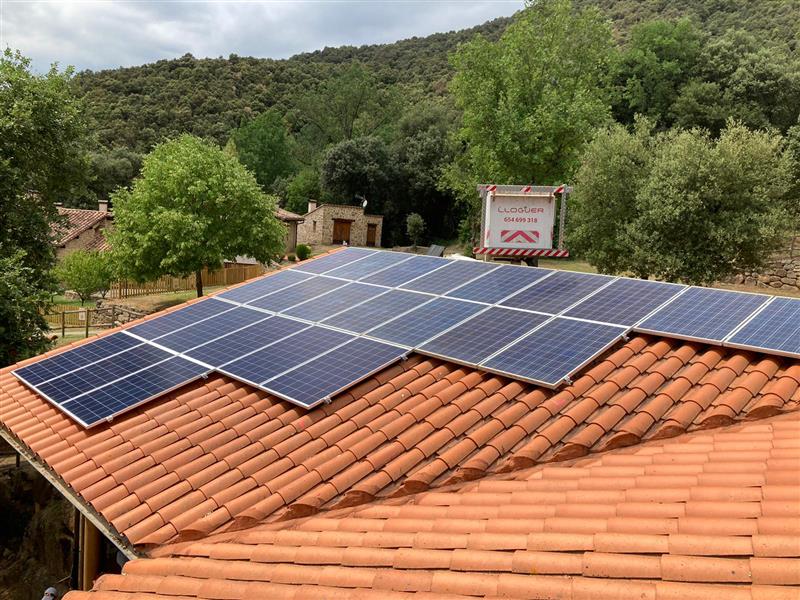Energy communities have become a key pillar in the transition to a sustainable and decentralized energy model in Spain. These initiatives allow citizens, companies and administrations to actively participate in the generation and consumption of renewable energy, promoting not only savings and efficiency, but also social cohesion and the fight against climate change.
According to the II Report on Indicators of Energy Efficiency Energy Communities(Common Energy Observatory, Ecodes, Redeia and MITECO), by the end of 2024 Spain reached 659 energy communities, a growth of 44% over the previous year.
Current status of energy communities in Spain
| Year | No. of energy communities | % municipalities with EC |
|---|---|---|
| 2023 | 479 | 4,0 % |
| 2024 | 659 | 8,1 % |
➡️ 200 new energy communities in one year.
➡️ Double the number of municipalities involved compared to 2023.
In addition, since 2018, the installed capacity of self-consumption in Spain has increased 20-fold, reaching more than 5 GW.
Factors explaining growth
- Institutional support
- Recovery, Transformation and Resilience Plan: more than 100 million euros for energy communities.
- EC Implementa Program: 129 projects supported in four calls for proposals, with 71.79 million euros mobilized.
- IDAE: publication of the interactive map with more than 40 outstanding projects throughout Spain.
- Territorial expansion
- 8.1% of Spanish municipalities already have at least one energy community.
- Growth in both urban and rural areas.
- Innovation and digitalization
- Incorporation of smart grids, energy storage systems and sustainable mobility projects.
Regulatory framework in Spain
Growth would not be possible without a favorable legal framework:
- Royal Decree-Law 23/2020: recognizes the right of citizens and entities to collectively produce, consume, store and share renewable energy.
- Royal Decree under consultation (April 2023, MITECO): creates a flexible regulatory framework and allocates specific quotas in renewable auctions for energy communities.
- European directives: they reinforce the role of these figures in the energy transition.
👉 Thanks to these regulations, consumers become “prosumers”, i.e. producers and consumers at the same time.
Catalonia: a benchmark in energy communities
The report points out that the autonomous communities where this model has been most developed are Catalonia, Valencia, the Basque Country and Navarre.
In the case of Catalonia, the differentiating factors are:
- A strong cooperative and municipalist tradition, with municipalities leading projects.
- Institutional support from the Generalitat and access to European programs.
- Diversity of models: from small mountain villages to urban projects in Girona, Barcelona or Figueres.
- Social impact: several projects include measures to combat energy poverty and strengthen women’s participation in governing bodies.
Examples in the province of Girona such as Sant Miquel de Campmajor, Tossa de Mar, Pals or Sant Julià de Ramis show how collective self-consumption is already a reality that combines savings, sustainability and community cohesion.
Advantages of energy communities
- Economic savings
- Decrease in the electricity bill.
- Stability in the face of energy price volatility.
- Environmental impact
- Lower carbon footprint.
- Reduced dependence on fossil fuels.
- Social impact
- Democratization of energy access.
- Citizen participation in decision making.
- Energy inclusion of vulnerable groups.
Challenges
- Financing: Difficulty of access to initial investment.
- Bureaucracy and complex regulation.
- Limited infrastructure in rural areas (smart grids, connectivity).
- Insufficient dissemination to citizens and SMEs.
Comparison with Europe
| Country | No. of energy communities (2025) |
|---|---|
| Germany | 1.750 |
| Spain | 659 |
| Denmark | 450 |
| Netherlands | 400 |
Spain is making rapid progress, but still has room for growth compared to leading countries such as Germany.
Future and trends
- Accelerated growth through crowdfunding models.
- Integration of storage batteries and electric vehicles.
- Expansion in small municipalities with public support.
- Increased leadership of local municipalities and cooperatives.
The 659 energy communities in Spain show that the model has ceased to be experimental and has become a consolidated reality. Despite the challenges, its growth is supported by a favorable legal framework, technological innovation and social awareness of the need for a cleaner, more democratic and sustainable energy system.
If you want to know more about how to create an energy community in your municipality or neighborhood, please consult our service of installation of energy communities. We accompany you in the design, management and implementation of the project so that you can be an active part of the energy transition.
